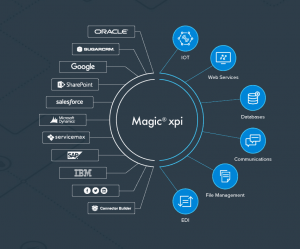10 Tips for CRM System Integration Projects

CRM System Integration Projects
10 Tips
There are at least a dozen oft-quoted industry analyst reports that estimate that the failure rate of CRM products is between 18 and 69 percent.
This data corroborates a well-known fact in our industry:
CRM Systems Integration projects can be very risky to implement. Projects can go over time and budget when risk factors are not identified up front and necessary adjustments are not made. The team at Integral are specialists in code-free CRM Integration – So whether it’s Salesforce, Microsoft Dynamics CRM, Sugar CRM, in fact, any CRM, we know how to help you extend the capability of it, delivering you greater efficiencies and return on investment. Here are some great tips on ensuring your project runs smoothly.
1. Avoid the big bang approach
Projects that attempt to integrate everything at once, are less likely to have a successful, timely, on-budget rollout. Breaking up the CRM project into smaller, more manageable components is critical because business needs change over time. It’s best to identify the portions of the project that can provide true and immediate business benefits, and start with those. Scale down the scope of your implementation and focus on quick, easy wins while allowing your team to build its expertise.
3. Invest in the right infrastructure
Undertaking a CRM integration project with the wrong infrastructure to support your team can lead to serious issues and excessive costs. Avoid solutions that rely on manual programming or overly complex, heavy middleware software sets. Focus on single-stack, single-studio solutions with an enterprise-class integration platform.
2. Have clear and specific requirements
When the use case has been poorly thought through, requirements can change frequently and create chaos in a CRM integration project. Everyone, including IT, salespeople, customers, the software vendor, and integrators, has to agree on what the expectations are, how the project will be implemented, and over what time frame. And if they can’t define the end product, they should define it in pieces. There is nothing wrong with using an agile methodology, but it still helps to have a clear vision before you begin.
4. Avoid impossible schedules
Aggressive schedules are fine but impossible schedules must be avoided. Set realistic expectations by establishing an accurate estimate of the integration efforts required for your project. If necessary, bring in an outside firm to provide an estimate of the effort required.
5. Minimize staff turnover
Changes in project management, business analysts, developers, and stakeholders can complicate the completion of a project. Try to avoid turnover by gaining commitments from participants that they are available for the expected duration of the project.






